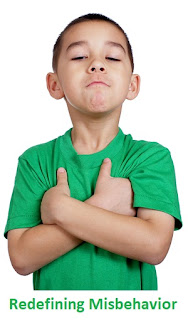Symptoms of Asperger's and High-Functioning Autism that "Look Like" Misbehavior

As parents of children on the autism spectrum know, there are a multitude of symptoms: physical (e.g., fine and gross motor skills deficits, sensory sensitivities), mental (e.g., attention difficulties), emotional (e.g., shutdowns, meltdowns, obsessions), and social (e.g., problems reading nonverbal language, difficulty understanding sarcasm). However, sometimes it becomes extremely difficult for parents to differentiate between (a) behavior problems and (b) symptoms of the disorder that "look like" behavior problems. For example, the Asperger's or high-functioning autistic child who has an allergy or food sensitivity may be cranky during periods of the day. The child who finds it difficult to transition from one activity to the next may experience a meltdown. The child who has difficulty waiting his turn may throw a tantrum. Thus, we need to learn how to adjust our parenting strategies accordingly. Sometimes, a consequence for misbehavior is inde
